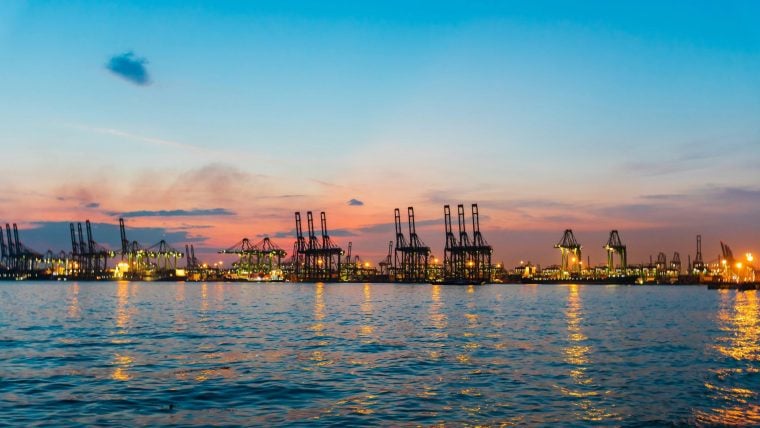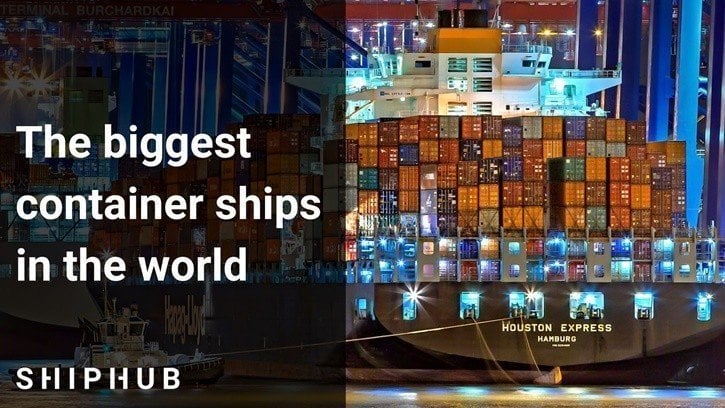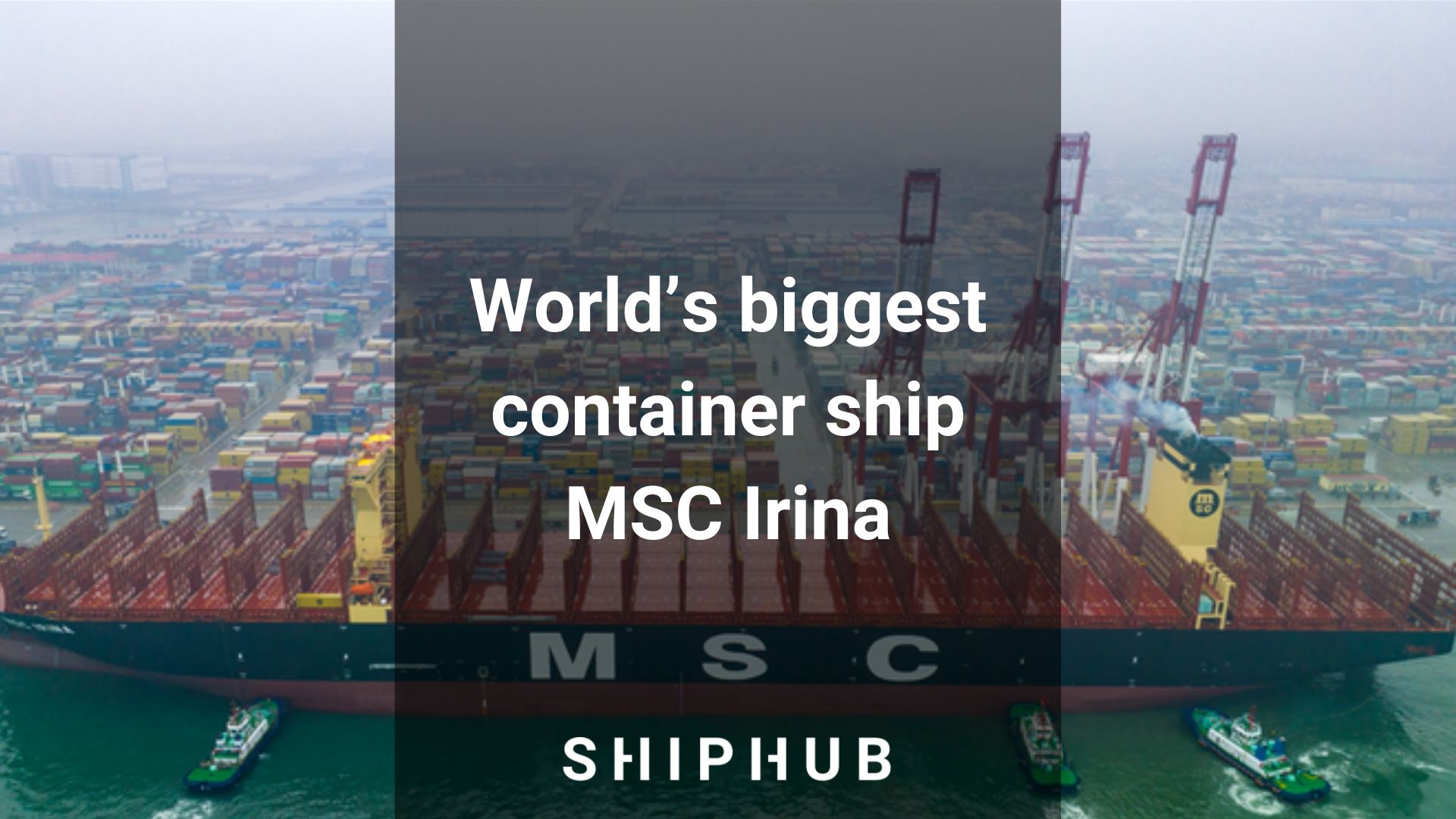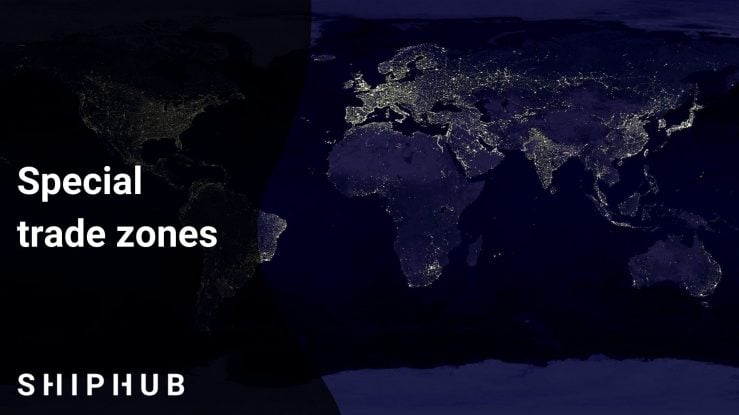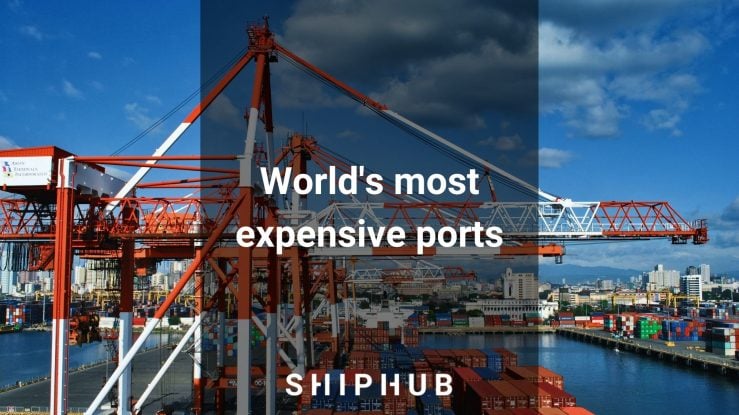It is estimated that 80% of world trade is facilitated by maritime shipping. The world’s busiest ports continue to grow and expand every year. Here are the world’s top 20 seaports in the world by TEU.
Top 20 seaports in the world – list
- Port of Shanghai
- Port of Singapore
- Port of Ningbo-Zhoushan
- Port of Shenzhen
- Port of Qingdao
- Port of Busan
- Port of Tianjin
- Port of Guangzhou
- Port of Jebel Ali
- Port of Hong Kong
- Port of Klang
- Port of Rotterdam
- Port of Xiamen
- Port of Antwerp
- Port of Tanjung Pelepas
- Port of Kaohsiung
- Port of Laem Chabang
- Port of Los Angeles
- Port of Long Beach
- Port of New York & New Jersey
Top 20 seaports by TEU
Here are brief descriptions of each port along with their facilities, TEU, and the types of cargo that are shipped the most.
20. Port of New York & New Jersey, the United States

The Port of New York & New Jersey is the largest port on the US East Coast, boasting modern container terminals, deep-water berths, and extensive logistics facilities. It specializes in handling containerized cargo, petroleum products, automobiles, and bulk cargo. Major exports include chemicals, machinery, and food products, while imports consist of raw materials, consumer goods, and industrial equipment. The port’s strategic location near major population centers and its efficient transportation connections make it a key hub for international trade and commerce.
Annual throughput in Port of New York & New Jersey (2023): 7.81 million TEUs
19. Port of Long Beach, the United States

The Port of Long Beach is in the top 10 busiest ports in North America, featuring cutting-edge container terminals, advanced cargo handling equipment, and efficient logistics infrastructure. It mainly handles automobiles, containerized cargo, petroleum products, and consumer goods. Major exports include machinery, electronics, and agricultural products, while imports consist of furniture, apparel, and building materials. The port’s strategic location on the West Coast and its proximity to major population centers make it a crucial gateway for trade with Asia-Pacific markets and beyond.
Annual throughput in Port of Long Beach (2023): 8 million TEUs
18. Port of Los Angeles, the United States

The Port of Los Angeles is the largest port in the United States. It has world-class facilities, including cutting-edge container terminals, efficient rail and road connections, and dedicated logistics parks. It handles a diverse range of cargo, including petroleum products, containers, automobiles, and consumer goods. The port’s strategic location on the West Coast makes it a key gateway for trade with Asia-Pacific markets.
Annual throughput in Port of Los Angeles (2023): 8.6 million TEUs
17. Port of Laem Chabang, Thailand

The Port of Laem Chabang is Thailand’s busiest and largest port, equipped with bulk cargo berths, modern container terminals, and efficient logistics facilities. It handles a diverse range of cargo, including automobiles, containers, petroleum products, and consumer goods. Major exports include electronics, automobiles, and processed foods, while imports consist of raw materials, machinery, and industrial equipment.
Annual throughput in Port of Laem Chabang (2023): 8.68 million TEUs
16. Port of Kaohsiung, Taiwan

The Port of Kaohsiung is the largest one in Taiwan. It features advanced container terminals, bulk cargo berths, and extensive logistics facilities. It specializes in petrochemicals, containerized cargo, and machinery. Major exports include electronics, plastics, and steel products, while imports comprise raw materials, components, and consumer goods.
Annual throughput in Port of Kaohsiung (2023): 8.8 million TEUs
15. Port of Tanjung Pelepas, Malaysia

The Port of Tanjung Pelepas (PTP) is Malaysia’s most advanced container terminal, and it is strategically located at the confluence of the main east-west shipping routes, which is why it is easily accessible from the Straits of Malacca.
Annual throughput in Port of Tanjung Pelepas (2023): 10.48 million TEUs
14. Port of Antwerp, Belgium

The port of Antwerp has one of the best locations in the center of Europe, making it a very convenient place for transshipment. It has deep-water berths and advanced container terminals and provides comprehensive logistics services. It specializes in handling containers, chemicals, petroleum products, and automotive products. Major exports include petrochemicals, steel products, and pharmaceuticals, while imports comprise consumer goods, raw materials, and machinery.
Annual throughput in Port of Antwerp (2023): 12.5 million TEUs
13. Port of Xiamen, China
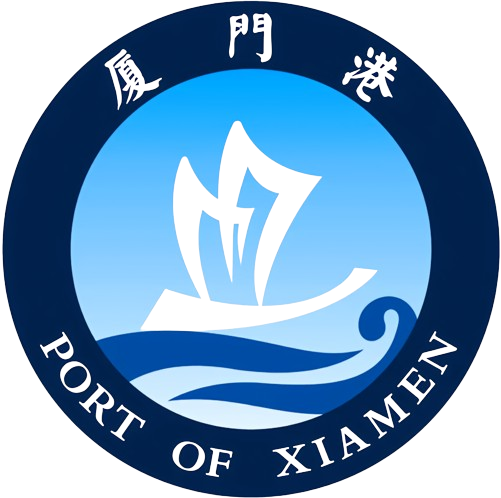
The Port of Xiamen is a major seaport in Southeastern China. It has modern container terminals, bulk cargo berths, and efficient logistics facilities. It specializes in handling machinery, containerized cargo, electronics, and textiles. Major exports include apparel, footwear, and furniture, while imports consist of raw materials, components, and industrial equipment.
Annual throughput in Port of Xiamen (2023): 12.55 million TEUs
12. Port of Rotterdam, the Netherlands

The Port of Rotterdam is Europe’s largest seaport and a vital logistics hub. It offers extensive rail and road connections, modern facilities, and innovative logistics solutions. The port specializes in handling containers, crude oil, chemicals, refined petroleum products, and automotive products. Its strategic location at the mouth of the Rhine River makes it a crucial gateway for trade with Europe’s hinterland and beyond.
Annual throughput in Port of Rotterdam (2023): 13.44 million TEUs
11. Port of Klang, Malaysia

The Port of Klang is Malaysia’s busiest seaport, located about 6 kilometers southwest of the town of Klang and 38 kilometers southwest of Kuala Lumpur. It features modern container terminals, bulk cargo berths, and extensive logistics facilities. It handles a diverse range of cargo, including agricultural products, containers, petroleum products, and chemicals. Major exports include rubber, palm oil, and electronics, while imports consist of consumer goods, raw materials, and machinery.
Annual throughput in Port of Klang (2023): 14.06 million TEUs
Top 10 seaports in the world
10. Port of Hong Kong, Hong Kong, China

The Port of Hong Kong is a major maritime gateway in East Asia. It is renowned for its deep-water berths, advanced container terminals, and efficient logistics services. It specializes in containerized cargo, textiles, electronics, and machinery. Major exports include toys, apparel, and consumer electronics, while imports comprise raw materials, components, and consumer goods.
Annual throughput in Port of Hong Kong (2023): 14.34 million TEUs
9. Port of Jebel Ali, the United Arab Emirates

Port of Jebel Ali is a deep port located in Dubai, United Arab Emirates. Moreover, it is the largest man-made port in the Middle East. There are modern container terminals, deep-water berths, and comprehensive logistics service providers. It specializes in containerized cargo, manufactured goods, petroleum products, and chemicals. Major exports include petrochemicals, plastics, and aluminum, while imports consist of consumer goods, raw materials, and machinery.
Annual throughput in Port of Jebel Ali (2023): 14.5 million TEUs
8. Port of Guangzhou, China

The Port of Guangzhou is a major seaport in Southern China with over 200 routes. It features bulk cargo berths, advanced container terminals, and efficient logistics facilities. It specializes in containerized cargo, electronics, automobiles, and machinery. Major exports include furniture, textiles, and household appliances, while imports comprise raw materials, components, and industrial equipment.
Annual throughput in Port of Guangzhou (2023): 20.8 million TEUs
7. Port of Tianjin, China

The Port of Tianjin (Tanggu) is the largest port in Northern China and the main maritime gateway to Beijing. It is equipped with modern container terminals, bulk cargo berths, and specialized facilities for handling various types of cargo. It handles a diverse range of cargo, including containers, coal, iron ore, crude oil, and agricultural products. Major exports include chemicals, steel products, and manufactured goods, while imports consist of consumer goods, energy resources, and raw materials.
Annual throughput in Port of Tianjin (2023): 21 million TEUs
6. Port of Busan, South Korea

The Port of Busan (also called Pusan) is located at the mouth of the Naktong River in South Korea. It is South Korea’s largest seaport and a central transshipment hub in Northeast Asia. It features modern container terminals, efficient cargo handling equipment, and extensive logistics facilities. It handles various cargoes, including automobiles, containers, machinery, and electronics.
Annual throughput in Port of Busan (2023): 22.75 million TEUs
5. Port of Qingdao, China

The Port of Qingdao is a key seaport in Northeastern China. It boasts modern container terminals, bulk cargo berths, and specialized facilities for handling various types of cargo.
The Port of Qingdao is a seaport on the Yellow Sea in the vicinity of Qingdao in Shandong Province in China. It trades with more than 450 ports in 130 countries and regions. It handles a diverse range of cargo, including containers, coal, iron ore, crude oil, and agricultural products. Major exports include machinery, chemicals, and processed foods, while imports consist of raw materials, energy resources, and agricultural commodities.
Annual throughput in Port of Qingdao (2023): 26.39 million TEUs
4. Port of Shenzhen, China

The Port of Shenzhen is one of the busiest and fastest-growing ports in the world. It is located in China and serves as a base for trade between Hong Kong and Mainland China (it is located about 37 km from Hong Kong to the south and 111 km from Guangzhou to the north). It specializes in containerized cargo, textiles, electronics, and machinery. Major exports include apparel, consumer electronics, and toys, while imports comprise raw materials, components, and machinery parts.
Annual throughput in Port of Shenzhen (2023): 29.88 million TEUs
3. Port of Ningbo-Zhoushan, China

The Port of Ningbo-Zhoushan is another Chinese port with great growth potential. Ningbo Zhoushan Port is the busiest port in China, apart from the port of Shanghai. It is also a hub port for domestic iron ore, crude oil, coal, and liquid chemical products transit and storage.
Annual throughput in Port of Ningbo-Zhoushan (2023): 35.3 million TEUs
2. Port of Singapore, Singapore

The Port of Singapore is currently the world’s second-busiest port in terms of total shipping tonnage. According to data, around 80% of the containers that arrive in Singapore are transshipped to other ports. The port handles around one-fifth of global container transshipment throughput. Port of Singapore specializes in containerized cargo, petroleum products, chemicals, and refined metals. Major exports include electronics, pharmaceuticals, and machinery, while imports comprise consumer goods, raw materials, and petroleum.
Annual throughput in Port of Singapore (2023): 39.01 million TEUs
1. Port of Shanghai, China – the top seaport in the world

The Port of Shanghai is the busiest port in the world regarding container throughput. It comprises a deep-sea port and a river port at the mouth of the Yangtze River, and it is the most crucial gateway for foreign trade.
The Port of Shanghai occupies an enviable geographic location. It enjoys near-ideal natural conditions, serves a vast economically developed hinterland, and has ample inland distribution facilities and infrastructure. It includes three major working zones: Yangshan Deep Water Port, Huangpu River, and Yangtze River.
The Port of Shanghai has been the number one container port in the world for years.
Annual throughput in Port of Shanghai (2023): 49.15 million TEUs
